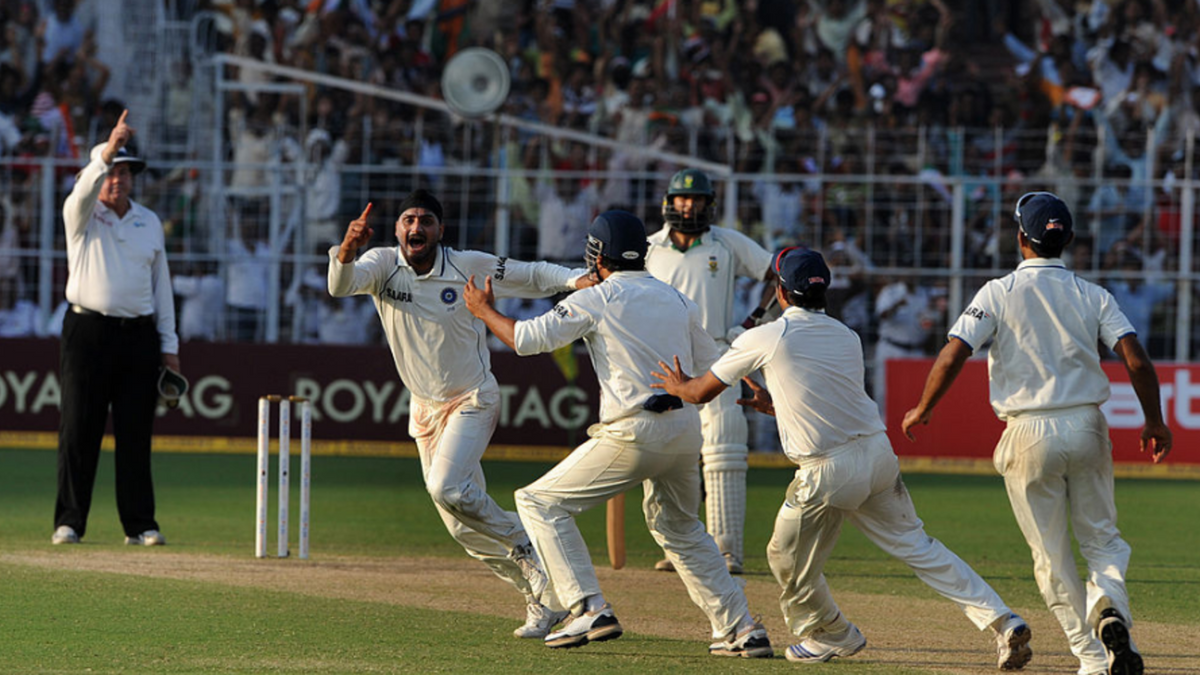
Harbhajan Singh’s career wasn’t without blemish, but he was a star performer who played a crucial role in India’s rise as a Test and limited-overs outfit in the Noughties, writes Divy Tripathi.
On February 18, 2010 South Africa were on the verge of creating history. The final Test of the series was in its dying stages, and the last-wicket partnership between Hashim Amla and Morne Morkel had managed to hold off the bowlers for more than 20 overs. They were already leading the series 1-0, and a draw here would’ve been India’s first home defeat in six years. It would’ve also been MS Dhoni’s first-ever series defeat in Test cricket.
But Harbhajan, who had fought relentlessly on that day, managed to deliver the decisive blow. A slider caught Morkel’s pad and he was adjudged LBW. The off-spinner ran across the ground at Eden Garden, followed by his jubilant team-mates, and India had managed to snatch another great victory at home.
For the majority of 2000s, Harbhajan joined hands with his senior partner, Anil Kumble, to ensure that their supremacy at home went unchallenged. For the Punjab player it all began at this very stadium. In 2001, he made a comeback into the side. The youngster had had an uneventful career so far, but India, missing their senior spinner Kumble, were in need of someone who could step into that role. Sourav Ganguly chose Harbhajan, and he delivered an all-timer of a series. He picked up 13-196 at Kolkata and followed it up with 15-217 at Chepauk to play an important role in a historic win as the greatest side in the world were humbled by their resilient hosts.
This began a decade-long run which saw Harbhajan deliver performances across formats, captains, and roles. There were issues, shown through his Test returns away from home against the stronger sides of the era: he averaged 73.22 in Australia, 48.57 in Sri Lanka, and 49.78 in England. Furthermore, from 2010 onwards his decline was steep – he averaged 40 with the ball in his last 23 Tests, with the last of those appearances coming in 2015. Nonetheless, the good days heavily outnumbered the bad, and he played a role in many decisive India wins.
He was at his best with Kumble in the longest format. He gave strong support to the former India captain, while also playing an equal hand on occasion. Together the duo picked 501 wickets for the team in 54 Tests. But as the South Africa Test mentioned above showed, Harbhajan also held his own as India’s senior spinner after Kumble’s retirement. This was visible in several overseas performances as well, such as his 6-80 at Durban, and 7-120 at Hamilton. He had an impressive overall Test record in the Caribbean (bowling average 25.86) and New Zealand (24.19).
While he build his reputation as a safe bet for his skippers in the limited-overs format as his ODI economy of 4.31 showed – helping build pressure in the middle-overs, he could blend attack with defence on his day. These skills came to India’s use in some crucial knockout games such as the 2002 Champions Trophy semi-final against South Africa where he took 2-37. He got rid off Michael Clarke with a surprise yorker at the right time to send the Australia chase in a frenzy in the 2007 T20 World Cup semi-final, and he also got the better of the Pakistan middle order in the 2011 ODI World Cup semi-final.
And, let’s not limit our discussion to his 711 international wickets, for Harbhajan could hold a bat as well. This was especially true in the Test format, where he played match-saving knocks including a 115 against New Zealand after India collapsed in their second innings. India have been blessed with some outstanding spinners over the last three decades and while some stand above Harbhajan, that shouldn’t disregard the value of the off-spinner’s service to his team.








